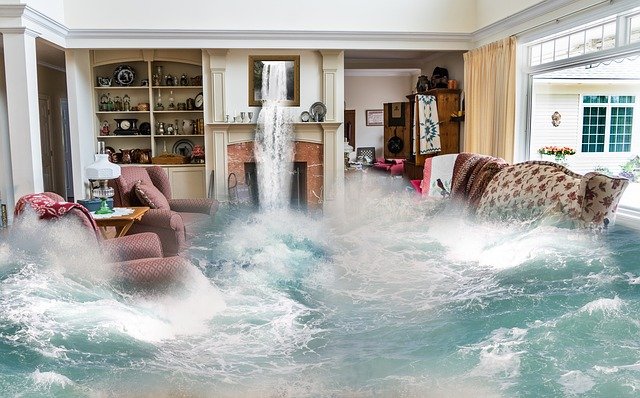You wake up one morning to find your house flooded with water. What do you do? This is a question that many people have faced during the flooding season. In this post, we will discuss what to do when your house floods so that you can reduce the damage and begin the cleanup process as soon as possible.
Ensure the safety of everyone involved in the flooding:
The first thing you should do after flooding is ensure that everyone is safe and secure. Do not attempt to enter the water or to clean up until assistance arrives! It is essential that you and your family members are all out of harm’s way. If there are children involved, be sure that they have supervision at all times so that they do not wander off too far away, where it might prove difficult for them to return safely. It is easy to feel overwhelmed during the process, so take your time and proceed with caution.
If you want to enter the house, use protective gear:
You can enter the flooded area with protective clothing. Make sure that your hands and feet are protected and they do not come into direct contact with infected water or sharp objects such as glass shards, nails, etc. If there is a need for more than one person inside, then ensure that someone stays at the door while another person enters the house where they will be able to open doors that might have been jammed by debris lodged between them.
If it’s safe enough, start removing excess water:
Once everyone is out of harm’s way and has had time to gather their bearings, begin removing excess flood water from your home. Try working systematically through each room of your house and place any items that have been damaged by the flooding into a separate pile. This step is crucial as it helps to reduce damage caused by excess moisture to your home. If you do not remove water quickly, you might have to deal with a massive mold outgrowth. Get rid of the debris immediately. But since there may be sharp objects such as glass or nails involved, ensure proper protection for yourself before trying to clean anything else from the flooded area. Also, remember to wear gloves at all times while cleaning.
Work through each room systematically:
Work through your home one by one, making sure not to miss any area. It is essential to keep in mind what has been damaged since it will be easier to repair things later! If items like furniture or appliances cannot fit into a bucket, try using protective plastic bags to store them before removing them from the area. Ensure that no water can drip onto other surfaces while transporting them elsewhere.
If the water has subsided, start checking for electrical hazards:
Once you have removed all excess liquid from your home and it is safe enough to enter without protective gear, begin moving through each room of your house to locate frayed wiring or loose outlets. Make sure you turn off the main electrical supply before entering the house. To prevent electrical hazards, ensure appliances such as televisions, computers, etc., do not touch standing water.
Removal:
While some items such as furniture might require professional removal services, try removing larger pieces yourself so as not to spend more than necessary. Once all excess liquid has been removed from the home and everything the appliances have been taken care of, it’s time to start the cleanup. The best way to do this is by using preventative measures to reduce damage to your home in general rather than just for flooding. This includes carpets and rugs, tiles, etc., so ensure these are thoroughly dried out before using them again.
If you have carpeting, make sure it has been completely dried out:
If there is any carpeting in your house, understand that it will take the longest to dry out since it absorbs water more than any other surface. Ensure that your carpets are completely dried out before using them again. Failure to do so will foster a habitual ground for mold overgrowth. This can result in serious health concerns for anyone present. If you have trouble drying up the carpet, try removing your carpeting and storing it somewhere safe away from windows that let sunlight through during daytime hours.
If cabinets are made of wood, then remove everything inside:
Check each cabinet and drawer for items such as glassware or paper products that could break due to excessive movement while being cleaned up. Also, take care not to damage anything by moving things around too roughly. Remove everything inside these containers before beginning cleanup. It will reduce the chances of breakage and allow you to take your time with the process without worrying about anything breaking or falling.
If water is still present, make sure appliances are dry:
If there is any liquid left in the home even after using fans for several hours, then assume power must be turned off at all sources. If moisture remains inside these places due to lack of air circulation, there could be severe damage as short circuits can occur when standing water is exposed to excessive electricity. To prevent this from happening, ensure that every appliance has been dried out before turning them back on again!
Contact a water damage restoration expert:
If the amount of water involved is too much to handle on your own, then contact a restoration expert who will be able to assess things and provide professional suggestions for short-term and long-term fixes. This process does not take long since they have all the necessary equipment required. If you have experienced flooding recently, the sooner you get in touch with them, the better.

